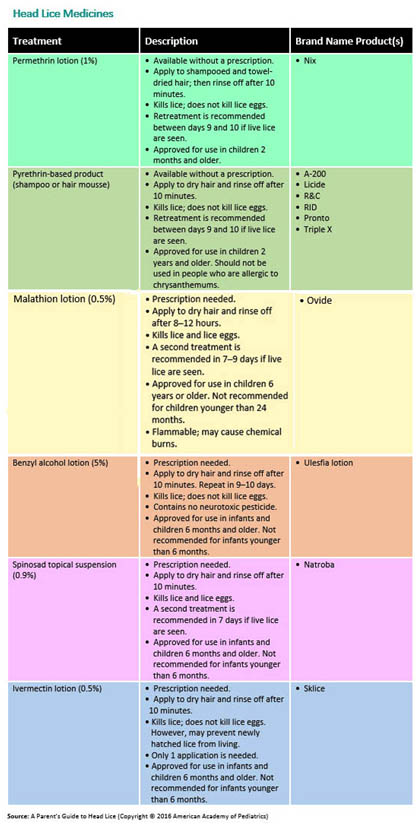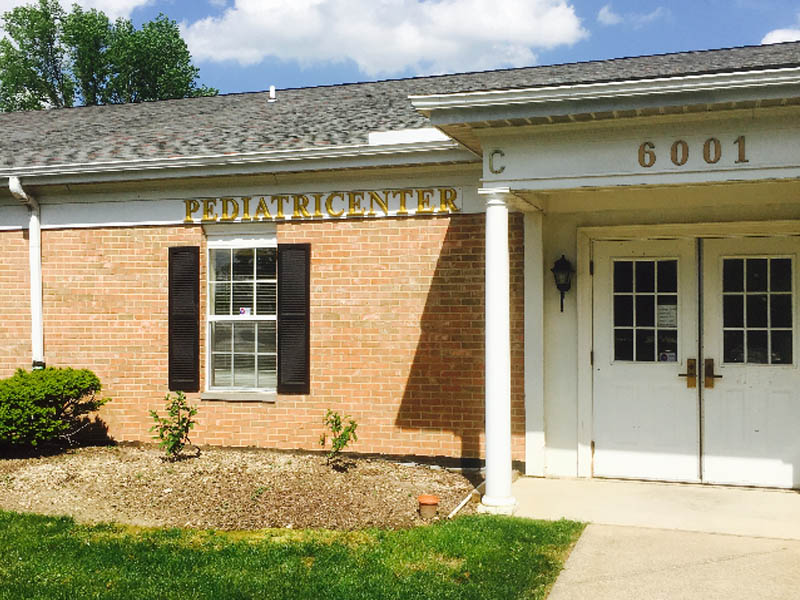Seasonal Updates
Influenza Vaccine
Pediatricenter is now happily offering the quadrivalent flu vaccine (protecting against 4 strains of influenza) this fall. The flu shot is recommended for almost every patient (with rare exceptions) 6 months of age and older. When it's the first time your child is getting a flu shot under the age of 8, he or she should receive two doses of the vaccine separated by at least 4 weeks (this includes patients receiving a flu vaccine for the first time the previous year who only received one dose).
The intranasal flu vaccine (FluMist) is NOT being recommended this year due to past ineffectiveness.
Here is the vaccine information sheet from the CDC for the injectable flu vaccine we are offering:
Inactivated Influenza (Flu) Vaccine
and please visit the CDC's website for information about signs and symptoms of influenza:
Children, Flu and the Flu Vaccine
Back To School Safety
Now that kids are back in the swing of things at school, here are some important tips in making sure they have safe, productive and healthy days.
Importance of Eating Breakfast and Lunch
Studies have shown that children who eat breakfast perform better in school, have more energy and are able to concentrate better than peers who do not eat breakfast. Breakfasts including protein help with sustained energy throughout the morning.
It’s also important for your child to eat lunch to keep their energy and focus sustained during the school day. If your child does not choose to eat school lunch, pack a lunch filled with healthy options. Monitor your child’s purchasing of sugared beverages and snacks at school from vending machines; these will often give kids a surge of energy, but once the sugar wears off can leave kids feeling tired and irritable.
Sleep Routine
Getting enough sleep is critical for children of all ages, and due to increasing electronic use, many children and teenagers are not getting nearly enough sleep. Difficulty concentrating and learning, along with poor grades, tardiness and absenteeism, are associated with sleep deprivation. A consistent, calming bedtime routine, along with a consistent bedtime, are important. Turning off electronics at least 30-45 min prior to bedtime will also help.
School aged children need on average 10-12 hours of sleep per night, and teenagers need 8-10 hours.
Getting To and From School
Walking to school
- Make sure your child knows how to walk safely to and from school, using sidewalks at all times when possible and if needing to walk in the street, walking opposite of traffic.
- Teach your child to never dart out from in between parked cars.
- Instruct your child never talk to strangers asking if the child needs a ride.
- Teach your child how to cross in a crosswalk, and how to properly look all ways to make sure no cars are coming.
Biking to school
- Make sure your child has an appropriately fitting bike helmet.
- Teach your child the rules of the road with biking: ride on the right side of the road, with traffic, in single file line, coming to a complete stops at intersections and walking the bike across the street.
Riding the bus
- Make sure your child is at least 6 feet, or 3 giant steps, away from the bus when it approaches.
- If your child needs to walk in front of the bus, make sure he or she can see the bus driver and that the bus driver sees your child.
Driving to school
- Many accidents happen with new teen drivers while they are driving to and from school.
- It’s important to talk with your teen about safe driving habits while driving, including:
Seat belt use
Limiting the number of passengers in the car
Minimizing distractions (no cell phone use, eating, drinking, etc)
Here is a sample contract for you and your teen driver: www.healthychildren.org/teendriver
Preventing backpack injuries
- A backpack with wide, padded shoulder straps and a padded back is best.
- It’s important to use both straps of the backpack to evenly distribute the weight on your child’s shoulders.
- Your child’s backpack should weigh no more than 10-20% of his or her total body weight.
Good Homework and Study Habits
It’s important to create a home environment that is conducive to good study habits. This includes allowing ample time for homework outside of extracurricular activities, along with a consistent and quiet workspace free from distraction that promotes study. Supervise computer and Internet use, and keep parental control of media use. Keep in close contact with your child’s teachers if there is a particular subject in which he or she is struggling. Helping your child stay organized by providing checklists, timers and supervision for homework and assignments is helpful.
Bullying
There are many different forms of bullying, including physical, verbal or social. With the increasing presence of social media, often bullying can become widespread quickly. Here are some tips from HealthyChildren.org:
When Your Child Is Bullied
Alert school officials to the problems and work with them on solutions.
Teach your child to be comfortable with when and how to ask a trusted adult for help. Ask them to identify who they can ask for help.
Recognize the serious nature of bullying and acknowledge your child's feelings about being bullied.
Help your child learn how to respond by teaching your child how to:
1.Look the bully in the eye.
2.Stand tall and stay calm in a difficult situation.
3.Walk away.
Teach your child how to say in a firm voice.
1. "I don't like what you are doing."
2. "Please do NOT talk to me like that."
Encourage your child to make friends with other children.
Support outside activities that interest your child.
Make sure an adult who knows about the bullying can watch out for your child's safety and well-being when you cannot be there.
Monitor your child's social media or texting interactions so you can identify problems before they get out of hand.
When Your Child Is the Bully
Be sure your child knows that bullying is never OK.
Set firm and consistent limits on your child's aggressive behavior.
Help your child learn empathy for other children by asking them to consider how the other child feels about the way your child treated them. Ask your child how they would feel if someone bullied them.
Be a positive role mode. Show children they can get what they want without teasing, threatening or hurting someone.
Use effective, non-physical discipline, such as loss of privileges.
Focus on praising your child when they behave in positive ways such as helping or being kind to other children as opposed to bullying them.
Develop practical solutions with the school principal, teachers, school social workers or psychologists, and parents of the children your child has bullied.
When Your Child Is a Bystander
Encourage your child to tell a trusted adult about the bullying. Encourage your child to join with others in telling bullies to stop.
Help your child support other children who may be bullied. Encourage your child to include these children in activities.
Halloween/Trick-or-Treat Safety
Here are some helpful tips from the CDC:
S - Swords, knives, and other costume accessories should be short, soft and flexible.
A - Avoid trick or treating alone. Walk in groups or with a trusted adult.
F - Fasten reflective tape to costumes and bags to help drivers see you.
E - Examine all treats for choking hazards and tampering before eating them. Limit the amount of treats you eat.
H - Hold a flashlight while trick-or-treating to help you see and others see you. Walk, don’t run, from house to house.
A - Always test make-up in a small area first. Remove it before bedtime to prevent possible skin and eye irritation.
L - Lower your risk for serious eye injury by not wearing decorative contact lenses
L - Look both ways before crossing the street. Use crosswalks whenever possible.
O - Only walk on sidewalks whenever possible, or on the far edge of the road facing traffic to stay safe.
W - Wear well-fitting masks, costumes, and shoes to avoid blocked vision, trips and falls.
E - Eat only factory-wrapped treats. Avoid eating homemade treats made by strangers.
E - Enter homes only if you’re with a trusted adult. Only visit well-lit houses. Never accept rides from strangers.
N - Never walk near lit candles or luminaries. Be sure to wear flame-resistant costumes.
It’s also important to monitor any children with food allergies. Houses with a teal pumpkin on the front step indicate a food allergy-free location.
Lice
With winter weather now upon us, it is the time of year for hats. With the inclusion of hats comes the possibility of sharing hats, which can spread the all-too-common nuisance of head lice. While scary to think of, head lice are quite common and most often easy to treat.
Head lice affects mostly school aged children. Head lice (single: louse) are around the size of a sesame seed and are typically pale gray in color. They feed off of small amounts of blood from the scalp. Lice lay and attach their eggs, called nits (which are yellowish-white in color) close to the scalp. Once the eggs hatch, the empty nits stay on the hair shaft.
Head lice typically live for around 28 days and develop in 3 phases: egg or nit, nymph and louse. Eggs hatch after around 6-9 days. Nymphs looks like much smaller lice, around the size of a pinhead, and become adults around 7 days after hatching. An adult louse can multiply quickly after hatching, laying up to 10 eggs per day. It takes around 12-14 days from when an egg hatches to become an adult louse. Cycles repeat every 3 weeks if lice are left untreated.
The most common symptoms of head lice are itching, which happens once the scalp becomes sensitive to the lice saliva. The most common spots to itch are behind the ears and on the nape of the neck. Itching can last for weeks, even after the lice are gone.
The best way to check for lice and nits is in a well-lit room, and methodically checking the hair section by section. Nits can often be confused for dandruff. Nits are close the scalp and are firmly adhered to the hair shafts, while dandruff is not.
Treatment for head lice includes the following, but it is important to always check with your child’s doctor before beginning treatment:

It is also important to keep safety in mind when applying lice medications. These medicines should always be applied by an adult, used as directed, and not used in a child under 2 years of age without direction of a physician. Children should not be left alone with lice medication on their scalp. Products should be rinsed off over a sink, not in the tub or shower, to avoid contact with other parts of the skin. After treatment, the comb-out method is recommended to get rid of lice and nits. First, wet your child’s hair. Second, use a fine-toothed comb and comb through your child’s hair in small sections. Third, after each comb, wipe the comb off with a paper towel looking for any lice or nits. Repeat steps 1-3 until you have gone through all of your child’s hair.
There are still some schools that have a “No Nit” policy, stating that children who are affected with lice are not allowed in school until nit-free. The American Academy of Pediatrics and the National Association of School Nurses discourage such policies and state that head lice should not exclude a child from being able to participate in school.
As always, if any questions about head lice arise, please give our office a call.
Source: HealthChildren.org






